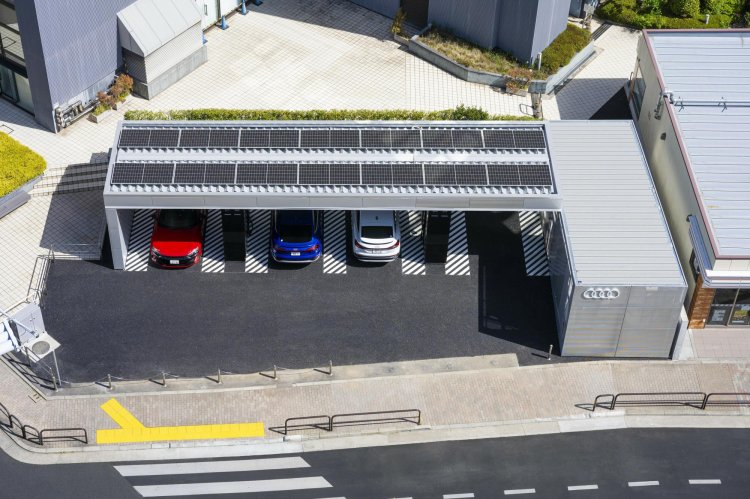Audi Builds Fast Charging Hub in Japan, Open to All Electric Cars
The Four Rings opened their first Audi charging hub outside Europe on April 26, 2024. In Tokyo, the capital of Japan, drivers of electric cars of all brands can now charge at four fast-charging points, each with up to 150 kilowatts (kW) – an excellent figure for charging power in Japan. Thanks to a buffer storage unit, the Audi charging hub places low demands on the local power grid. The seventh Audi charging hub overall only uses electricity from renewable sources.
Fast charging in the center of a vibrant metropolis: Audi now offers customers in Japan a perfect charging experience with its new charging hub in Tokyo. The Kioichō business district has offices, shopping facilities, and cafés nearby, allowing customers to spend their charging time in various ways. The hub is also adjacent to Audi City Kioichō, the German premium brand’s showroom for electric vehicles in the Japanese capital.
With this concept, Audi primarily serves a target group which cannot charge their cars at home in an urban environment. The compact version of the Audi charging hub in Tokyo has two charging stations with a total of four fast-charging points featuring CHAdeMO charging plugs. Like its European counterparts, the fast-charging station can be used for all-electric vehicles, regardless of brand.
In the future, Premium Charging Alliance (PCA) members will be able to reserve a charging point via the PCA app and thus avoid waiting times. PCA is a joint project between Audi and Porsche that aims to expand the fast-charging network in Japan. Around 6,000 PCA members currently have access to more than 400 fast-charging points nationwide.
Battery storage solution enables fast charging
Customers can charge their electric vehicles with up to 150 kW at the Audi charging hub in Tokyo. This is an excellent figure because the prerequisites for charging power differ between Japan and European countries. For example, the voltage in the Japanese power grid is only 100 volts. Electrical power is calculated as the product of voltage and current. In Japan, the current must be correspondingly high to achieve high charging capacities. This, in turn, requires large cable cross-sections, which are the exception rather than the rule in the country’s power grids that have evolved historically.
Audi is making fast charging possible at its charging hub in Tokyo through a battery storage solution. Consequently, the company is promoting the expansion of the charging infrastructure while enabling higher charging speeds than the average in Japan. The charging points place low demands on the local power grid. The battery stores electricity when there is little load on the power grid - for example, at night. As the battery acts as a buffer storage for direct current, there is no need for a complex infrastructure with high-voltage supply lines and costly transformers. Audi only uses electricity from renewable sources. Green energy also powers the Audi charging hub, mainly generated directly by the photovoltaic system on the charging station’s roof.
A positive response to a unique charging concept
Audi is already planning a second charging hub in Tokyo. It is set to be built in the Shiba kōen district, the location of the famous Tokyo Tower. The Four Rings have already opened six Audi charging hubs in Germany, Austria, and Switzerland. The hubs are in Berlin, Frankfurt, Munich, Nuremberg, Salzburg, and Zurich.






